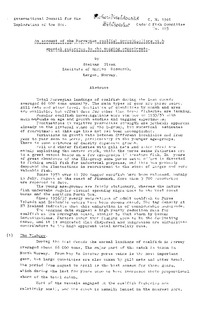| dc.description.abstract | Total Norwegian landings of coalfish during the last decade averaged 66 000 tons annually. The main types of gear are purse seine, gill nets and otter trawl. Statistics of quantities by month and area are available, but effort data for other than trawl fisheries are lacking. Regular coalfish investigations were started in 1953/54 with main emphasis on age and growth studies and tagging experiments. Fluctuations in relative year-class strength are probably apparent
already in the littoral stage of the O-group, but numerical estimates of recruitment at this age have not yet been accomplished.
Variations in growth rate between different localities and from year to year seem to occur, particularly in the younger age-groups. There is some evidence of density dependent growth. Fall and winter fisheries with gill nets and otter trawl are mainly exploiting the mature stock, while the purse seine fisheries are to a great extent based on a few age-groups if immature fish. In years
of great abundance of the III-group some purse seine effort is diverted to fishing small fish for industrial purposes, and this has probably dampened the fluctuations in recruitment to the stock of larger and more
valuable fish. Since 1954 over 11 700 tagged coalfish have been released, mainly in July, August at the coast of Finnmark. Mre than 3 700 recoveries are reported to date. The young age-groups are fairly stationary, whereas the mature fish undertake regular distant spawning migrations to the west coast
banks and the northern North Sea. Since 1956/57 yearly emigrations of adult coalfish to Faroe Islands and Icelandic waters have been demonstrated. The tag density at
SE Iceland indicates that this emigration is of considerable magnitude. The tagging data suggest a high yearly reduction rate for
coalfish at the Norwegian coast, similar to that shown by German investigations. Factors other than fishing seem to be the dominating cause, and it is suggested that dispersal and emigration are significant contributors to the high apparent total mortality rate. | en_US |
